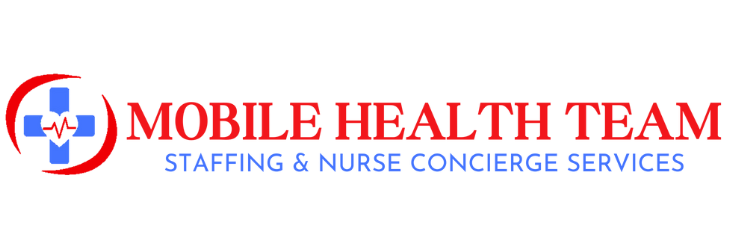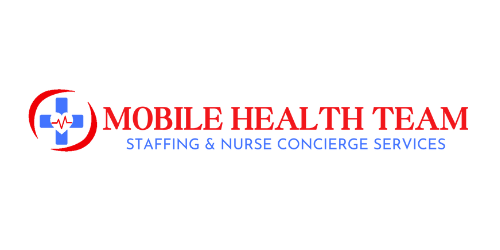The healthcare industry is one of the fastest-growing and most dynamic sectors, driven by technological advancements, regulatory changes, and shifting patient demands. A thorough market analysis helps healthcare businesses—whether hospitals, clinics, medical device manufacturers, staffing agencies, or digital health startups—understand industry trends, competitive landscapes, and emerging opportunities.
This guide breaks down the key components of a healthcare market analysis and how businesses can use data-driven insights to succeed.
1. Understanding the Healthcare Market Landscape
The healthcare industry is broad and highly regulated, making market analysis crucial for strategic decision-making, investment planning, and competitive positioning. Key areas of focus include:
✅ Market Size & Growth Rate – Evaluate the current market size, projected growth, and emerging sub-sectors like telemedicine, home healthcare, and AI-powered diagnostics.
✅ Trends & Innovations – Track technological advancements (e.g., wearable health tech, remote patient monitoring) and shifts in patient behavior (e.g., demand for personalized care).
✅ Regulatory Changes – Stay updated on healthcare policies, FDA regulations, HIPAA compliance, and reimbursement trends that impact service delivery.
✅ Economic & Demographic Factors – Consider aging populations, increasing chronic disease prevalence, and healthcare spending trends.
2. Key Components of a Healthcare Market Analysis
A. Industry Overview & Growth Opportunities
Healthcare is a high-demand industry, but businesses must identify specific market segments with the most growth potential.
🔹 Telehealth & Digital Health: The global telemedicine market is growing rapidly, driven by convenience and insurance coverage expansions.
🔹 Home Healthcare & Concierge Services: Patients prefer in-home care services for chronic disease management, post-hospital recovery, and elderly care.
🔹 Healthcare Staffing & Workforce Solutions: The nursing shortage and demand for travel nurses create opportunities in healthcare staffing.
🔹 Artificial Intelligence & Automation: AI-driven diagnostics, robotic-assisted surgeries, and automated workflows are revolutionizing patient care.
B. Target Market & Patient Demographics
Identifying key patient groups helps businesses tailor services, marketing strategies, and pricing models.
✅ Aging Population & Senior Care: The 65+ age group is rapidly growing, increasing demand for geriatric care, home healthcare, and assisted living.
✅ Chronic Disease Management: Diabetes, cardiovascular diseases, and cancer care drive demand for preventative care and remote monitoring.
✅ Behavioral & Mental Health Services: The rise in mental health awareness is fueling demand for teletherapy, psychiatric services, and integrated care models.
✅ Tech-Savvy Consumers: Younger generations prefer digital health platforms, wearable health devices, and mobile health apps.
C. Competitive Analysis in Healthcare
A strong competitive analysis helps healthcare businesses understand market positioning and differentiation strategies.
🔹 Identify Competitors: Direct competitors (e.g., hospitals, private clinics) vs. indirect competitors (e.g., wellness startups, alternative medicine providers).
🔹 Assess Strengths & Weaknesses: Analyze pricing, patient experience, service offerings, and reputation.
🔹 Technological Edge: Evaluate how competitors use AI, EHR (Electronic Health Records), and patient engagement tools.
🔹 Reimbursement & Insurance Partnerships: Competitors with strong payer partnerships may have an advantage in affordable patient care access.
🛠 SWOT Analysis Example:
| Factor | Strengths | Weaknesses | Opportunities | Threats |
|---|---|---|---|---|
| Telehealth Company | Convenience, scalability | Limited insurance coverage | Expansion into mental health services | Increasing competition |
| Healthcare Staffing Firm | High demand for travel nurses | Regulatory hurdles | AI-driven workforce management | Burnout & high turnover |
D. Market Trends & Demand Forecasting
The future of healthcare depends on several key trends:
✅ Value-Based Care: Shift from fee-for-service to patient outcome-based reimbursement models.
✅ AI & Predictive Analytics: AI-driven diagnostics and predictive models improve early disease detection and patient care.
✅ Retail Healthcare Expansion: Companies like Amazon, CVS, and Walgreens are entering primary and urgent care markets.
✅ Preventive & Personalized Medicine: Rise of DNA testing, precision medicine, and holistic health approaches.
✅ Medical Tourism: Demand for affordable, high-quality healthcare abroad continues to rise.
E. Pricing Strategy & Reimbursement Models
Healthcare pricing is complex, influenced by insurance reimbursements, government funding, and patient affordability.
🔹 Private Pay vs. Insurance-Based Services: Some services thrive in self-pay models (e.g., concierge medicine), while others depend on Medicare, Medicaid, or private insurers.
🔹 Subscription-Based Models: Emerging in direct primary care (DPC), mental health platforms, and telemedicine.
🔹 Bundled Payment Systems: Hospitals and providers are adopting flat-rate pricing for procedures and treatments to improve cost transparency.
F. Regulatory & Economic Factors Affecting Healthcare Businesses
Healthcare is heavily regulated, and businesses must stay compliant with federal and state laws.
✅ HIPAA Compliance: Protecting patient data is crucial for telehealth, digital health, and EHR platforms.
✅ FDA & Medical Device Approvals: Ensuring compliance for biotech, pharmaceuticals, and medical device companies.
✅ Reimbursement Policies: Medicare, Medicaid, and private insurance policies affect service accessibility.
✅ Labor Market Challenges: Nursing shortages and physician burnout impact staffing agencies and healthcare facilities.
3. How to Conduct a Market Analysis in Healthcare
Step 1: Define Your Business Niche & Target Audience
🔹 Are you a healthcare staffing agency, telemedicine provider, medical device company, or home healthcare provider?
🔹 Identify patient demographics, insurers, healthcare providers, and policymakers as stakeholders.
Step 2: Gather Industry Data & Market Reports
📊 Use industry reports from McKinsey, Deloitte, CDC, and WHO.
📊 Analyze healthcare spending trends and patient demographics.
📊 Conduct competitor benchmarking and patient satisfaction surveys.
Step 3: Conduct Competitive & SWOT Analysis
🔹 List top competitors and their market positioning.
🔹 Compare pricing, technology adoption, and service models.
🔹 Identify market gaps your business can fill.
Step 4: Forecast Demand & Set Pricing Strategies
🔹 Predict patient demand using AI-driven analytics.
🔹 Align pricing models with insurance reimbursements & out-of-pocket affordability.
🔹 Adjust strategies based on economic conditions and government regulations.
Step 5: Implement & Monitor Strategies
🔹 Use KPIs (Key Performance Indicators) like patient acquisition, revenue growth, and customer retention.
🔹 Adapt marketing and operational strategies based on new trends.
Final Thoughts: Why Market Analysis is Crucial for Healthcare Businesses
A well-executed healthcare market analysis helps businesses:
✔ Identify profitable opportunities in a competitive industry.
✔ Align services with patient demand and healthcare trends.
✔ Mitigate risks by understanding regulatory and economic challenges.
✔ Gain a competitive advantage through data-driven strategies.



